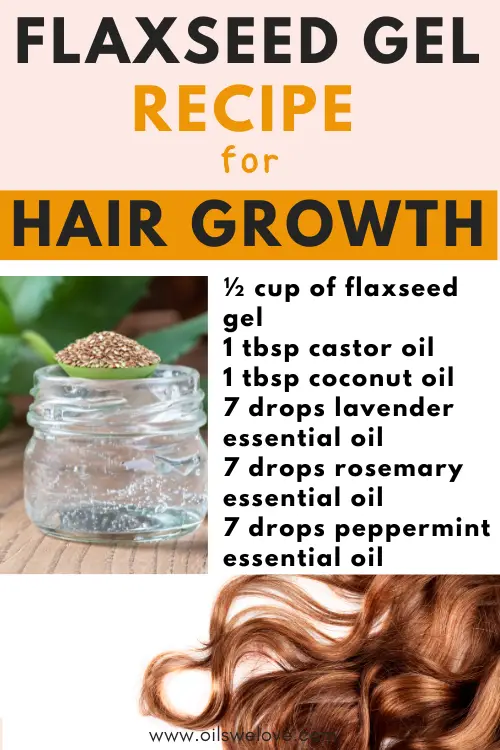Flax seed gel is a natural and affordable solution for promoting healthy hair growth. Flax seeds are packed with nutrients that can nourish your hair from the inside out. In this article, we will explore the power of flax seeds, how they benefit your hair, and how you can make your own flax seed gel at home. We will also discuss the application process, tips and tricks for using flax seed gel, and real-life success stories from users. So if you’re looking for a natural way to improve the health and appearance of your hair, read on to discover the wonders of flax seed gel.
Understanding the Power of Flax Seeds
Flax seeds have been used for centuries for their numerous health benefits. These tiny brown seeds are an excellent source of omega-3 fatty acids, which are essential for maintaining a healthy scalp and promoting hair growth. Flax seeds are also rich in vitamins, minerals, and antioxidants that can nourish and protect your hair follicles. When consumed regularly, flax seeds can improve the overall health and strength of your hair.
But let’s dive deeper into the nutritional profile of flax seeds to truly understand why they are considered nutritional powerhouses. Just one tablespoon of flax seeds contains approximately 1.8 grams of omega-3 fatty acids, making it an exceptional source of this essential nutrient. Omega-3 fatty acids play a crucial role in maintaining the health of your hair, as they help nourish your hair follicles, promote hair growth, reduce inflammation, and improve scalp health.

- 2-Week anti-inflammatory meal plan.
- 45 Foods that Cause Inflammation
- 31 Things to Avoid on Food Labels
- Grocery Lists. Challenges. Symptoms Tracker
In addition to omega-3 fatty acids, flax seeds are also packed with other important nutrients that contribute to hair health. They are a great source of protein, which is essential for building and repairing tissues, including the hair strands. The protein content in flax seeds helps strengthen your hair, making it more resistant to damage and breakage.
Furthermore, flax seeds are rich in fiber, which aids in digestion and promotes overall gut health. A healthy gut is essential for nutrient absorption, ensuring that your body can effectively utilize the vitamins and minerals present in flax seeds for optimal hair health.
Flax seeds are also abundant in vitamins B1, B6, and E, which are known to play important roles in hair growth and maintenance. Vitamin B1 (thiamine) helps improve blood circulation to the scalp, ensuring that the hair follicles receive adequate oxygen and nutrients. Vitamin B6 (pyridoxine) is involved in the production of melanin, the pigment responsible for the color of your hair. And vitamin E is a powerful antioxidant that protects the hair follicles from oxidative stress and damage caused by free radicals.
Moreover, flax seeds provide essential minerals such as magnesium, manganese, and phosphorus, which are all crucial for maintaining healthy hair. Magnesium helps in protein synthesis and promotes hair growth, while manganese supports the production of collagen, a protein that gives structure to the hair strands. Phosphorus is involved in the formation and maintenance of strong hair and can help prevent hair loss.
But that’s not all – flax seeds also contain lignans, which are antioxidants that have been shown to reduce hair thinning and increase hair density. These lignans have estrogenic properties, which means they can help balance hormonal levels in the body. Hormonal imbalances can often lead to hair problems, such as excessive hair shedding or hair loss. By incorporating flax seeds into your diet, you can potentially improve these imbalances and promote healthier hair growth.
In conclusion, flax seeds offer a wide range of nutrients that are beneficial for your hair. From omega-3 fatty acids to vitamins, minerals, and lignans, these tiny seeds have the power to nourish your hair follicles, promote hair growth, strengthen your hair strands, and protect against common hair problems. So, why not add flax seeds to your daily diet and unlock the potential of healthier, more vibrant hair?
If you are into using homemade recipes to help your hair grow, check out these 5 DIY recipes of hair masks for hair growth.
Making Your Own Flax Seed Gel at Home
If you’re ready to incorporate flax seed gel into your hair care routine, you’ll be glad to know that making it at home is quick and easy. Here’s what you’ll need:
Ingredients Needed for Flax Seed Gel
- 1/4 cup whole flax seeds
- 2 cups water
That’s it! With just two simple ingredients, you can create your own natural flax seed gel.
Step-by-Step Guide to Making Flax Seed Gel
- In a medium saucepan, combine the flax seeds and water.
- Bring the mixture to a boil, then reduce the heat to low and simmer for 10-15 minutes.
- Stir the mixture occasionally to prevent the seeds from sticking to the bottom of the pan.
- After simmering, remove the saucepan from the heat and let the mixture cool for 15-20 minutes.
- Strain the gel using a fine-mesh sieve or cheesecloth to separate the liquid from the seeds.
- Transfer the gel into a clean container and store it in the refrigerator for up to two weeks.
Once you have your homemade flax seed gel, it’s time to start reaping the benefits for your hair.
Applying Flax Seed Gel for Hair Growth
Now that you have your flax seed gel ready, it’s important to know how to apply it properly to maximize its effectiveness.
How to Apply Flax Seed Gel
Start by washing your hair with a sulfate-free shampoo. This will ensure that your hair is clean and receptive to the benefits of the flax seed gel. After shampooing, apply a small amount of the gel to your damp hair, focusing on the roots and the lengths. Massage the gel into your scalp using gentle circular motions to stimulate blood circulation. Then, comb the gel through your hair to distribute it evenly. Style your hair as desired and let it air dry or use a diffuser if you prefer to blow dry.
When to Apply Flax Seed Gel
You can use flax seed gel as often as you like, but for best results, it’s recommended to apply it at least once or twice a week. Some people prefer to use it as an overnight treatment, applying the gel to their hair and leaving it on overnight. Others prefer to use it as a styling gel, applying it before drying or styling their hair. Experiment with different application methods and frequencies to find what works best for your hair type and desired results.
Tips and Tricks for Using Flax Seed Gel
To get the most out of your flax seed gel, here are some tips and tricks to keep in mind:
Storing Your Flax Seed Gel
Since the homemade flax seed gel doesn’t contain any preservatives, it’s important to store it properly to prevent spoilage. Keep it in a clean and airtight container in the refrigerator to extend its shelf life. If you notice any changes in smell, texture, or appearance, it’s a sign that the gel has gone bad and should be discarded.
Adding Essential Oils for Extra Benefits
To enhance the benefits of your flax seed gel, you can add a few drops of essential oils. Tea tree oil, lavender oil, and rosemary oil are all great options that can promote scalp health, soothe irritation, and stimulate hair growth.
Here is a list of essential oils that are commonly used for promoting hair growth:
- Rosemary Oil: Rosemary oil is believed to increase blood circulation in the scalp, which can stimulate hair follicles and promote hair growth.
- Lavender Oil: Lavender oil has soothing properties and can help improve scalp health. It may also help promote hair growth and reduce hair loss.
- Peppermint Oil: Peppermint oil has a cooling effect on the scalp and can help stimulate hair follicles. It may promote hair growth and improve the thickness of hair strands.
- Cedarwood Oil: Cedarwood oil is known for its antifungal and antibacterial properties, which can help maintain a healthy scalp. It may also stimulate hair follicles and promote hair growth.
- Thyme Oil: Thyme oil has been used traditionally to treat hair loss. It may help promote hair growth by improving circulation and providing nourishment to the hair follicles.
- Clary Sage Oil: Clary sage oil can help balance scalp oils and reduce inflammation. It may help improve hair strength and stimulate hair growth.
- Ylang Ylang Oil: Ylang ylang oil is believed to balance scalp oil production and promote hair growth. It also has a pleasant aroma.
- Tea Tree Oil: Tea tree oil has antimicrobial properties and can help maintain a healthy scalp. It may promote hair growth by reducing scalp inflammation and dandruff.
- Jojoba Oil: Although technically not an essential oil, jojoba oil is often used as a carrier oil for essential oils. It closely resembles the natural oils produced by the scalp and can help moisturize the hair and promote hair growth.
- Rosehip Oil: Rosehip oil is rich in antioxidants and vitamins, which can nourish the hair follicles and promote hair growth. It can also help improve scalp health.
Remember to always dilute essential oils with a carrier oil before applying them to the scalp, and perform a patch test to check for any allergic reactions or sensitivities. It’s also a good idea to consult with a healthcare professional or a qualified aromatherapist before using essential oils for hair growth.





